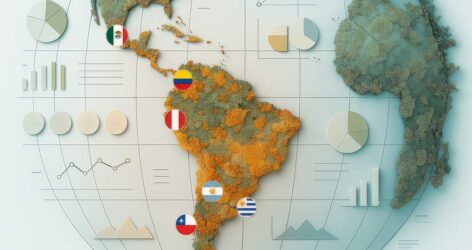NFT (Non-Fungible Token) is advancing every day, adding new uses and applications: from digital art to creating online communities, branding, and many other possibilities that will surely surprise us in the near future.
What are NFTs about?
Before talking about this trend, it is necessary to explain the nature of the NFTs, known as Non-Fungible Token, for their acronym in English.
They are digital assets based on Blockchain technology, which cannot be copied since each token is unique and irreproducible. That makes it possible to deliver digital ownership certificates, just as happens in the “real” world with works of art or any other object.
"NFTs have not only already revolutionized the art world, but also there is a revolution happening for brands and their relationship with customers. The decentralized economy, web 3.0, and crypto should not be topics that large organizations look sideways at,"
indicates Tomás Criado, CEO & Co-founder of Epical Digital, a Digital marketing agency part of the Oxean Cross ecosystem.
And he adds that:
"particularly talking about NFTs, there is no doubt that they have the potential to break with everything traditional and lead brands to a unique interaction with their target audience. When you understand their reach, it changes the whole perspective. We must think of it as a new business model capable of opening up unimaginable opportunities".
How do they work?
They operate with Blockchain technology, the same one used for cryptocurrencies in a decentralized computer network, with blocks or nodes linked and secured using cryptography.
Each NFT is assigned to a digital certificate of authenticity, a series of metadata that cannot be modified. Metadata guarantees authenticity by recording the starting value and author, along with all purchases or transactions that have been made.
Each sale and resale produces a certificate of digital ownership, ensuring that no forgery or duplication of the same asset can occur and that ownership is indisputable.
Tokens can include any file type one can imagine: 3D animations, audio tracks, static images, texts, and unlock exclusive (even hidden) benefits for buyers.

Brands that have entered the NFT universe
There is a lot of money at stake. Simply because whoever buys an NFT believes that its value will increase and will make a profit in the future.
If someone buys an NFT for 100,000 euros, eventually will be able to resell it for more money because it is a unique asset. There is no other like it.
This universe includes digital artists, influencers, celebrities, and investors developing platforms to market NFTs.
But also forward-thinking brands are diving in and making their way.
Discovering flavor in an audio
One of them is Coca-Cola, which capitalized on its collectibles history by selling a series of four NFTs. They reversed, in pixelated digital format, a classic 1956 vending machine. The brand partnered with Tafi, a Utah-based startup that creates virtual avatars and other content.
An authentic and digital version of a car
Another brand that is making inroads into NFTs is Nissan. The Japanese car brand combined the real world with the virtual world by launching the first SUV with an NFT of its design: each buyer will receive, along with their vehicle, an exclusive piece of crypto-art designed by digital artist Fesq.
Into the Metaverse
Adidas announced last December 2 in a tweet from its official account that it is about to jump into the metaverse with a full NFT collection. In a video, the German sports brand showed three avatars belonging to the Bored Ape Yacht Club, Punks Comic, and Gmoney collections from “The Sandbox” platform.
Adidas had also changed its profile picture on their social network and the Bored Ape #8774 on its typical brand clothing. In September, this NFT was sold for 46 ETH (Ethereum is a decentralized open-source blockchain system with its own cryptocurrency) or around USD 180 thousand.

NFT, Communication & CSR
Interestingly, most of the brands that bet on the NFTs through campaigns designed to support social causes: part or all of the funds raised go to philanthropic marketing.
In the case of Coca-Cola, it did so through an NFT auction, with all profits benefiting Special Olympics International.
On the occasion of Pride Month 2021, Givenchy Parfums launched an NFT in partnership with Amar Singh, an LGTBIQA+ activist. Together with artists Rewind Collective, they created a digital artwork that was sold to benefit the Le MAG Jeunes organization.
Meanwhile, the Great British Olympic team launched an official NFT collection, sold exclusively through its website. All earnings went to the British Olympic Association.
A new direction for internal communication?
The potential of NFTs is enormous, no one disputes that, and it is still impossible to know what their scope will be.
As far as internal communication is concerned, we believe that the path being taken by many brands and companies to incorporate it into their marketing strategies generates differential actions that also allow CSR to be reinforced in a new possible way.
At Oxean Cross, we believe that innovation is an essential part of Internal Communication. NFTs can be a new resource to achieve the most powerful aspect of all: bringing people closer and improving organizations’ ecosystems.
Do you have questions?
You can also contact us :





